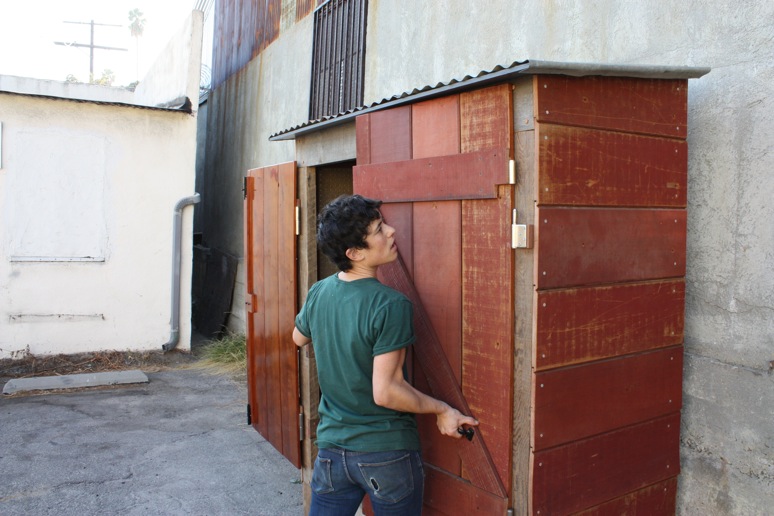This composting demonstration shed was designed & built for the new Exploratorium site. When closed it stores composting & instructional supplies, and when opened it expands into a pop-up demonstration kiosk for public composting workshops.
This is how it will look installed against the exterior of the museum at the new Exploratorium site when it is not in use.
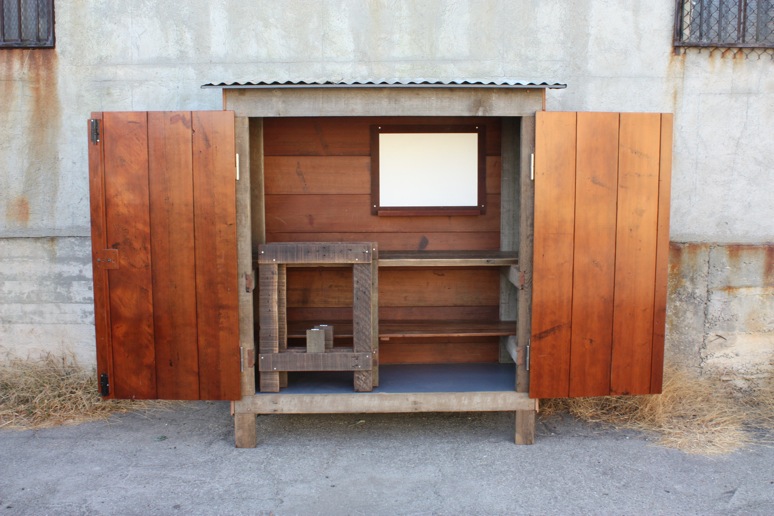 The inside of the shed is outfitted with a counter top work surface, a white board for instruction, a pegboard for tools and shelves for worm bins and soil. Two saw horses for the pop-up demonstration table are stored flat.
The inside of the shed is outfitted with a counter top work surface, a white board for instruction, a pegboard for tools and shelves for worm bins and soil. Two saw horses for the pop-up demonstration table are stored flat.
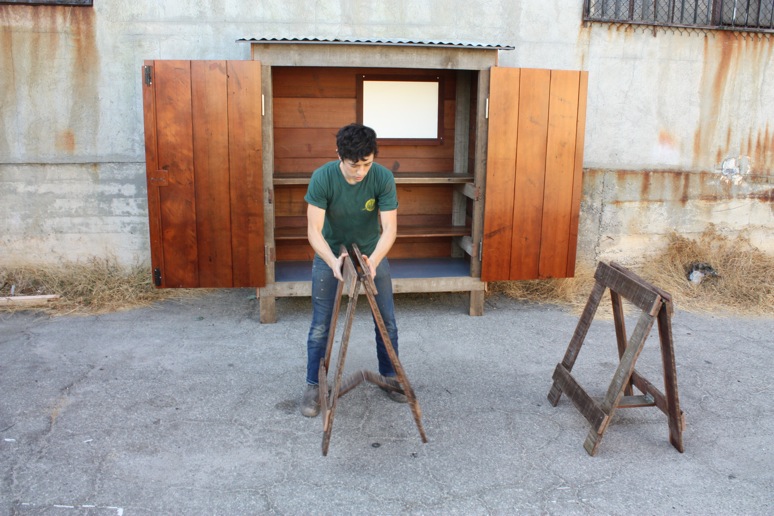 The sawhorses unfold to create the base for the demonstration table.
The sawhorses unfold to create the base for the demonstration table.
Both barn doors easily lift off their hinges…
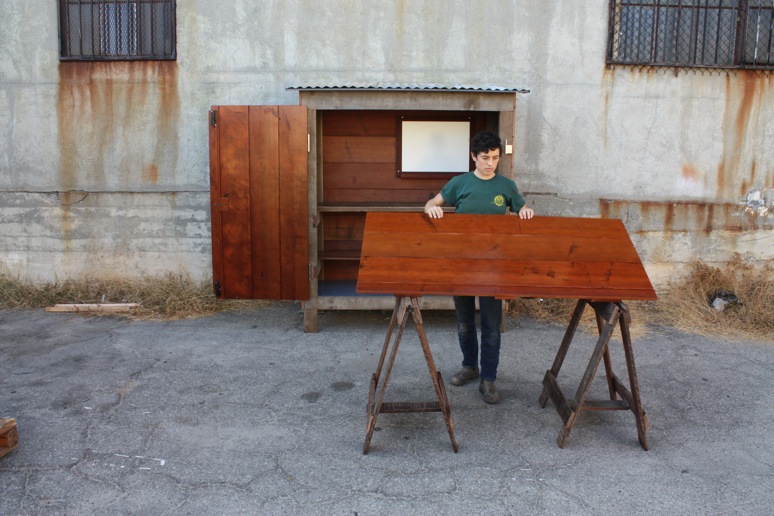 …creating the demonstration table surface
…creating the demonstration table surface
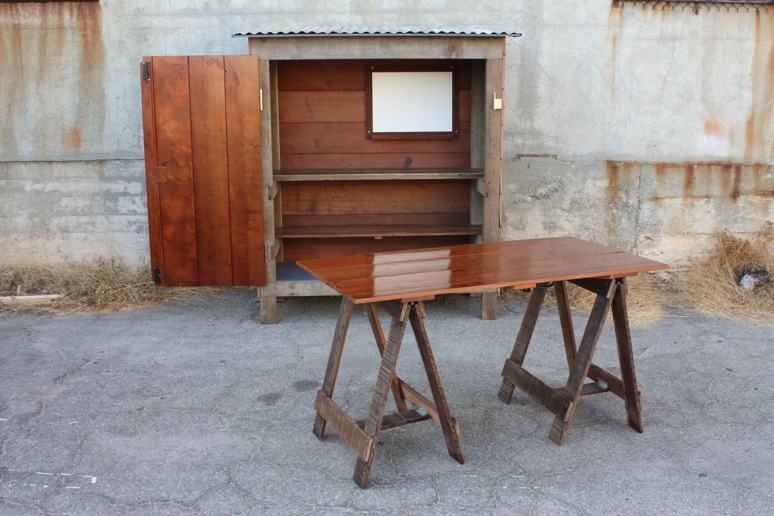 This simple set up will accommodate a couple of instructors, thousands of worms, and a large crowd of eager visitors ready to donate their lunch scraps to the collective experiment.
This simple set up will accommodate a couple of instructors, thousands of worms, and a large crowd of eager visitors ready to donate their lunch scraps to the collective experiment.
__________________________________________________________________________________________________________________________________________________________________________
 I had the honor of collaborating with my best friend JD Sassaman on this project. In our late teens and 20s, we worked together on a wide range of semi-awful building jobs and unsuccessful business ventures. So it was a great relief to come together again in our more confident & competent mid-30s to design and build this project.
I had the honor of collaborating with my best friend JD Sassaman on this project. In our late teens and 20s, we worked together on a wide range of semi-awful building jobs and unsuccessful business ventures. So it was a great relief to come together again in our more confident & competent mid-30s to design and build this project.
Woodworking can be a solitary and pensive craft, so I love the occasional opportunity for collaboration–particularly on projects like this which allow for looseness and creative spontaneity. This rough build project was especially fun for J and I–both of us coming from a refined fine furniture background, and J having recently graduated from a grueling and perfection-oriented 4 year architecture program.
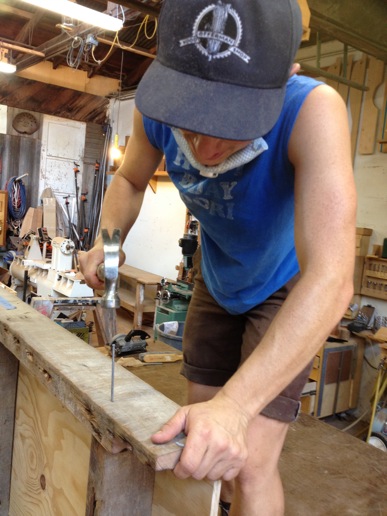 While most people associate the hammer and the nail with my profession–this was the first project in a long time that I have been able to employ this basic fastening technique! It felt pretty good.
While most people associate the hammer and the nail with my profession–this was the first project in a long time that I have been able to employ this basic fastening technique! It felt pretty good.
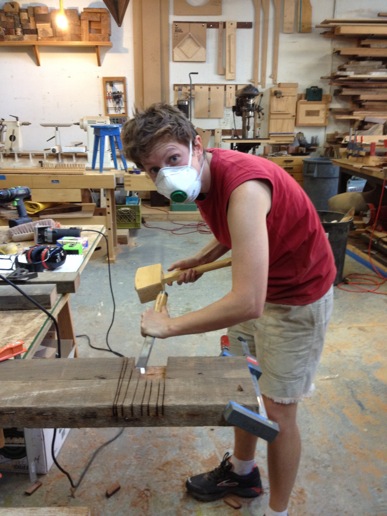 Meanwhile, J did all of the lap joinery using a traditional timber frame method–using a skill saw to cut the edges of the joint and to remove some of the inside material. She then came back with a large framing chisel to clean it up. After using tiny precise tools for years, this method was fast and particularly satisfying for both of us.
Meanwhile, J did all of the lap joinery using a traditional timber frame method–using a skill saw to cut the edges of the joint and to remove some of the inside material. She then came back with a large framing chisel to clean it up. After using tiny precise tools for years, this method was fast and particularly satisfying for both of us.
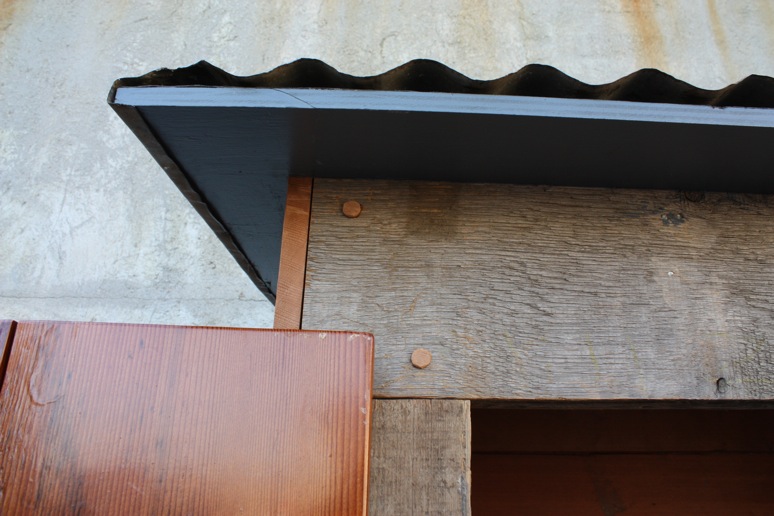 And nothing is quite as enjoyable as driving in the pegs to finally pin your joint.
And nothing is quite as enjoyable as driving in the pegs to finally pin your joint.


